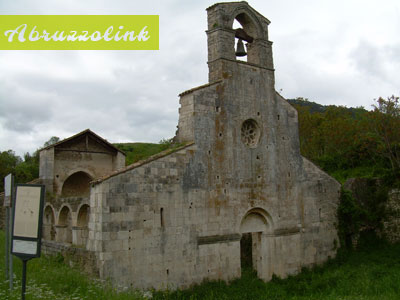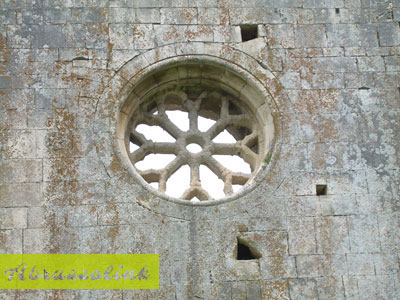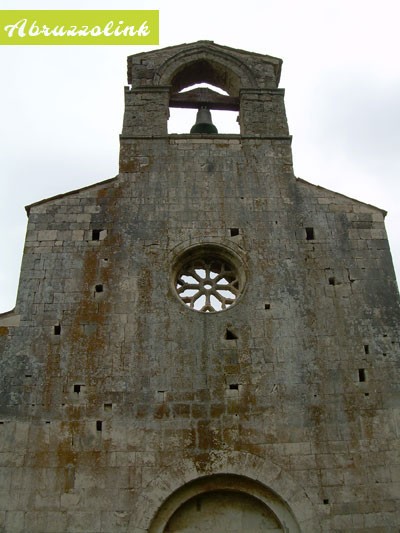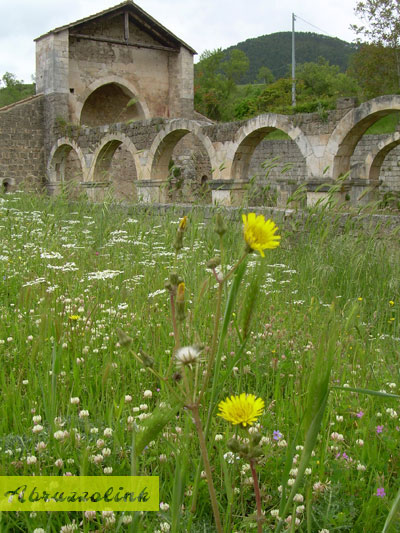Santa Maria di Cartignano (Bussi sul Tirino)
Traveling from Pescara to L’Aquila along the SS153 you will have the opportunity to admire the ruin of the medieval church of Santa Maria di Cartignano.
The church was built in the XI century and it is an important milestone in the Benedictine colonization of Abruzzo.
The oldest document is a deed of gift dated 1021 where it’s reported about a cell, i.e. a small country church, of St. Benedict. This and other possessions in the Valva’s territory were confirmed to the monastery of Monte Cassino by the Emperor Henry II.
Only in 1065 it became a real monastery, as shown by the records of those years. Infact the documents report not only about a dean but also about monks living there.
Starting from the next century the documentation thins until it disappears for about three centuries, during which Cartignano continued to be a monastery.
After being abandoned by the Cassino monks the church became a grange of San Liberatore a Majella. Towards the middle of the XVIII century the church passed to the Morrone’s Celestiniani monks.
The church has stylistic characteristics of the XII century rather than the period of the Benedictine foundation. In a deed of 1770 there is a description of the church still standing having a structure “in three naves, with two side altars, a sacristy, a large door on the north facade, and a small one on East and annuity of two hundred ducats.”
The church was rediscovered at the beginnig of twentieth century, since in the centuries it was completely submerged by alluvial debris .
Today as a result of excavation and restoration work, the building has been partially reconstructed. You can see a building which now features a rectangular layout with three naves separated by arches placed on square pillars .
In the left aisle was rebuilt the altar that most probably in the original church had paired with a similar one in the opposite aisle .
Another small stone altar is located in the central nave . The church ends in an apse, originally decorated with a fresco a Deesis (Christ blessing enthroned between the Virgin and St. John) now in the National Museum of L’Aquila, that outside has a semicircular shape with hanging arches .
The facade is simple and austere, with a sort of central cusp ending in the belfry.
The portal is very simple; both the lintel and the bezel are smooth and without decoration except for a leaf which is definitely a reused piece. It’s possible that the bezel had a lost fresco no more visible. A simple decoration is present on the capitals; the right one has an indentation while the left one presents strings and a part of an epigraph . At the center of the facade the rose windows consists of eight columns arranged in rays that connect a central circle to side arches.
The belfry is not an exact reconstruction of the original which had a central column, now replaced by the bell. Also documents of the time show that originally the church had two bells.
Observing the different type of arches present in the church – i.e. pointed arch outside in the rose windows and in the belfry and round arch resting on square pillars inside, is possible to argue that the church was build prior to 1021, while the expansion and modernization dates from the thirteenth century under the influence of new artistic currents of the Cistercian Gothic .
Next to the church there are remains of a guest quarters, typical of the ‘tratturale’ church, or, according to documents of 1770 , a ‘stanza del romito’ (hermit’s room) i.e. the hermit’s dwelling.
Together with the apse fresco depicting a Deesis, the interventions brought to light other small frescoes, very damaged by moisture, placed in rectangular rooms and depicting St. Nicholas , St. Benedict , St. Agatha , St. Paul, St. Amico, S. Mauro and St. Peter; these frescoes are now kept at the Museum of L’Aquila. Other valuable works recovered include a stone bas-relief representing the Easter theme kept in the church of Saint Rita in Bussi . The narrative proceeds counterclockwise , from top downwards. The sacrifice of Christ is represented by the symbols of the lamb and the cross; His death by a lying figure, His resurrection by a suspended figure on the right side. At the base there are two lions, a symbol of the sacrifice of Christ and his victory over death. Another work who had survived is the polychrome statue of the Madonna and Child, also kept in the church of St. Rita in Bussi.
In the outside wall of the church were found blocks of local stone with inscriptions dating back to the Roman period . One of these, a funerary inscription, is located on the main facade to the left of the portal. Another funerary inscription is on the right pillar of the portal while the third, a long funerary inscription in eight overlapping lines, is located on the western outside wall.
Credits
http://cultura.regione.abruzzo.it/
http://www.museonazionaleabruzzo.beniculturali.it/
Photo of the Deesis fresco
[gdl_gallery title=”santa-maria-di-cartignano” width=”215″ height=”140″ type=”1″ ]








